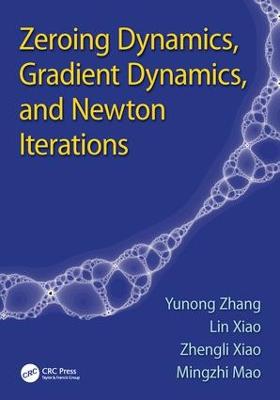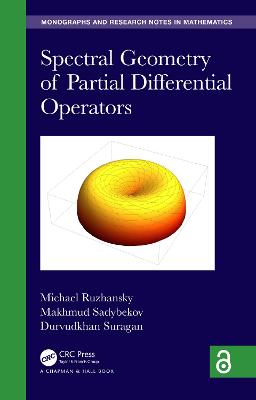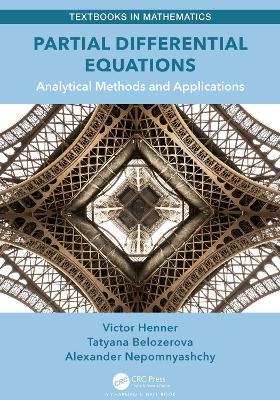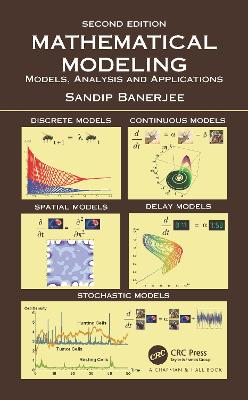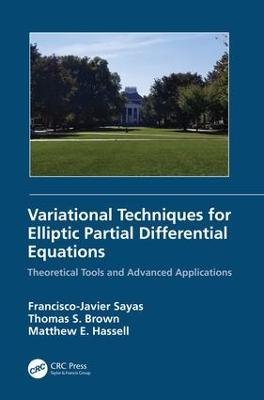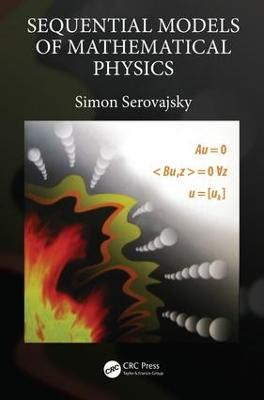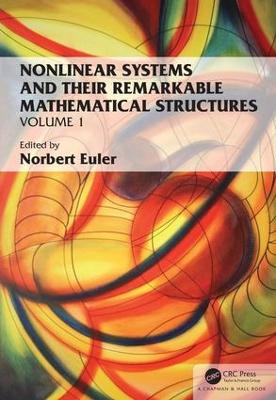Piece-wise and Max-Type Difference Equations
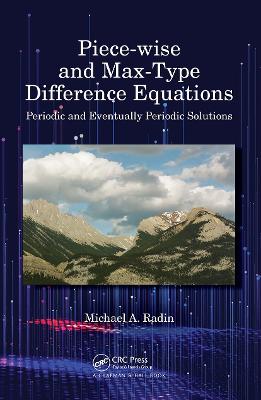 -10%
portes grátis
-10%
portes grátis
Piece-wise and Max-Type Difference Equations
Periodic and Eventually Periodic Solutions
Radin, Michael A.
Taylor & Francis Ltd
09/2020
172
Dura
Inglês
9781138313507
15 a 20 dias
426
Preface vii
Acknowledgments ix
Author xi
Introduction 1
1.1 Recursive Sequences . . . . . . . . . . . . . . . . . . . . . . . 3
Order and Explicit Solution of a ?.E. . . . . . . . . . . . . . 5
Non-Autonomous Difference Equations . . . . . . . . . . . . 6
1.4 Periodic Sequences . . . . . . . . . . . . . . . . . . . . . . . . 7
Alternating Periodic Cycles . . . . . . . . . . . . . . . . . . . 12
Specific Patterns of Periodic Cycles . . . . . . . . . . . . . . 13
Eventually Periodic Sequences . . . . . . . . . . . . . . . . . 14
1.8 Piece-wise Sequences . . . . . . . . . . . . . . . . . . . . . . 18
1.9 Chapter 1 Exercises . . . . . . . . . . . . . . . . . . . . . . . 20
Linear Difference Equations 25
Autonomous Linear Difference Equations . . . . . . . . . . . 26
2.2 Non-Autonomous Linear ?.E.'s . . . . . . . . . . . . . . . . 27
2.2.1 Multiplicative Form of Eq. (2.5) . . . . . . . . . . . . . 27
2.2.2 Additive Form of Eq. (2.5) . . . . . . . . . . . . . . . . 31
2.3 Chapter 2 Exercises . . . . . . . . . . . . . . . . . . . . . . . 40
Riccati Difference Equations 43
3.1 First-Order Riccati ?.E. . . . . . . . . . . . . . . . . . . . . 43
3.2 Second-Order Riccati ?.E. . . . . . . . . . . . . . . . . . . . 50
3.3 Chapter 3 Exercises . . . . . . . . . . . . . . . . . . . . . . . 60
Piece-wise Difference Equations 63
4.1 The Collatz Conjectures . . . . . . . . . . . . . . . . . . . . 64
4.2 The Tent-Map . . . . . . . . . . . . . . . . . . . . . . . . . . 65
The Autonomous Neuron Model . . . . . . . . . . . . . . . . 72
Autonomous Neuron Model when ? = 1 . . . . . . . . 79
Non-Autonomous Neuron Model . . . . . . . . . . . . . . . . 82
Non-Autonomous Neuron Model when ?0?1 = 1 . . . 88
4.5 The Williamson Model . . . . . . . . . . . . . . . . . . . . . 92
4.6 The West Nile Epidemics Model . . . . . . . . . . . . . . . . 93
4.7 Chapter 4 Exercises . . . . . . . . . . . . . . . . . . . . . . . 93
5 Max-Type Difference Equations 97
5.1 The Autonomous Case (Eq. [5.1]) . . . . . . . . . . . . . . . 97
Eventually Periodic with Period-2 . . . . . . . . . . . 100
Eventually Periodic with Period-4 . . . . . . . . . . . 109
Eventually Periodic with Period-3 . . . . . . . . . . . 117
Eventually Constant with K = 1 . . . . . . . . . . . . 125
5.2 The Non-Autonomous Case (Eq. [5.2]) . . . . . . . . . . . . . 130
Eventually Periodic with Period-2 . . . . . . . . . . . 132
Eventually Periodic with Period-4 . . . . . . . . . . . 140
Eventually Periodic with Period-6 . . . . . . . . . . . 144
5.3 Chapter 5 Exercises . . . . . . . . . . . . . . . . . . . . . . . 147
6 Appendices 149
6.1 Patterns of Sequences . . . . . . . . . . . . . . . . . . . . . . 149
6.2 Alternating Patterns of Sequences . . . . . . . . . . . . . . . 149
6.3 Finite Series . . . . . . . . . . . . . . . . . . . . . . . . . . . 150
Convergent Infinite Series . . . . . . . . . . . . . . . . . . . . 150
Periodicity and Modulo Arithmetic . . . . . . . . . . . . . . 151
Alternating Periodicity . . . . . . . . . . . . . . . . . . 151
Patterns as an Initial Value Problem . . . . . . . . . . . . . 152
Specific Periodic Patterns . . . . . . . . . . . . . . . . . . . . 153
Bibliography 155
Index 157
Preface vii
Acknowledgments ix
Author xi
Introduction 1
1.1 Recursive Sequences . . . . . . . . . . . . . . . . . . . . . . . 3
Order and Explicit Solution of a ?.E. . . . . . . . . . . . . . 5
Non-Autonomous Difference Equations . . . . . . . . . . . . 6
1.4 Periodic Sequences . . . . . . . . . . . . . . . . . . . . . . . . 7
Alternating Periodic Cycles . . . . . . . . . . . . . . . . . . . 12
Specific Patterns of Periodic Cycles . . . . . . . . . . . . . . 13
Eventually Periodic Sequences . . . . . . . . . . . . . . . . . 14
1.8 Piece-wise Sequences . . . . . . . . . . . . . . . . . . . . . . 18
1.9 Chapter 1 Exercises . . . . . . . . . . . . . . . . . . . . . . . 20
Linear Difference Equations 25
Autonomous Linear Difference Equations . . . . . . . . . . . 26
2.2 Non-Autonomous Linear ?.E.'s . . . . . . . . . . . . . . . . 27
2.2.1 Multiplicative Form of Eq. (2.5) . . . . . . . . . . . . . 27
2.2.2 Additive Form of Eq. (2.5) . . . . . . . . . . . . . . . . 31
2.3 Chapter 2 Exercises . . . . . . . . . . . . . . . . . . . . . . . 40
Riccati Difference Equations 43
3.1 First-Order Riccati ?.E. . . . . . . . . . . . . . . . . . . . . 43
3.2 Second-Order Riccati ?.E. . . . . . . . . . . . . . . . . . . . 50
3.3 Chapter 3 Exercises . . . . . . . . . . . . . . . . . . . . . . . 60
Piece-wise Difference Equations 63
4.1 The Collatz Conjectures . . . . . . . . . . . . . . . . . . . . 64
4.2 The Tent-Map . . . . . . . . . . . . . . . . . . . . . . . . . . 65
The Autonomous Neuron Model . . . . . . . . . . . . . . . . 72
Autonomous Neuron Model when ? = 1 . . . . . . . . 79
Non-Autonomous Neuron Model . . . . . . . . . . . . . . . . 82
Non-Autonomous Neuron Model when ?0?1 = 1 . . . 88
4.5 The Williamson Model . . . . . . . . . . . . . . . . . . . . . 92
4.6 The West Nile Epidemics Model . . . . . . . . . . . . . . . . 93
4.7 Chapter 4 Exercises . . . . . . . . . . . . . . . . . . . . . . . 93
5 Max-Type Difference Equations 97
5.1 The Autonomous Case (Eq. [5.1]) . . . . . . . . . . . . . . . 97
Eventually Periodic with Period-2 . . . . . . . . . . . 100
Eventually Periodic with Period-4 . . . . . . . . . . . 109
Eventually Periodic with Period-3 . . . . . . . . . . . 117
Eventually Constant with K = 1 . . . . . . . . . . . . 125
5.2 The Non-Autonomous Case (Eq. [5.2]) . . . . . . . . . . . . . 130
Eventually Periodic with Period-2 . . . . . . . . . . . 132
Eventually Periodic with Period-4 . . . . . . . . . . . 140
Eventually Periodic with Period-6 . . . . . . . . . . . 144
5.3 Chapter 5 Exercises . . . . . . . . . . . . . . . . . . . . . . . 147
6 Appendices 149
6.1 Patterns of Sequences . . . . . . . . . . . . . . . . . . . . . . 149
6.2 Alternating Patterns of Sequences . . . . . . . . . . . . . . . 149
6.3 Finite Series . . . . . . . . . . . . . . . . . . . . . . . . . . . 150
Convergent Infinite Series . . . . . . . . . . . . . . . . . . . . 150
Periodicity and Modulo Arithmetic . . . . . . . . . . . . . . 151
Alternating Periodicity . . . . . . . . . . . . . . . . . . 151
Patterns as an Initial Value Problem . . . . . . . . . . . . . 152
Specific Periodic Patterns . . . . . . . . . . . . . . . . . . . . 153
Bibliography 155
Index 157




